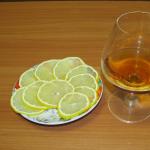Steam boilers stationary type KE (E) with natural circulation steam capacity 2.5; 4.0; 6.5; 10; 25 t/h with an absolute steam pressure of 1.3 MPa (13.0 kgf/cm 2); 2.3 MPa (23.0 kgf/m2).
KE (E) boilers are solid fuel boilers designed to produce saturated steam or superheated steam through the combustion of hard and brown coal for the technological needs of industrial enterprises, in heating, ventilation and hot water supply systems. They are manufactured both with sheathing and insulation, and without them (by agreement).
Symbols of steam boilers
Explanation of the names of boilers using the example of KE-6.5-14-225СО
KE (E) – boiler type;
6.5 – steam production (t/h);
14 – absolute steam pressure (in kgf/cm2);
225 – superheated steam temperature (if superheated steam is required);
CO - layered firebox (solid fuel) in the casing.
KE 6.5-14СО (E-6.5-1.4Р) – steam boiler steam capacity 6.5 t/h, absolute pressure 1.4 MPa (14 kgf/cm2) for the production of saturated steam in cladding and insulation;
KE 6.5-14C (E-6.5-1.4R) – steam boiler with a steam output of 6.5 t/h, an absolute pressure of 1.4 MPa (14 kgf/cm2) for the production of saturated steam without lining and insulation ( by agreement);
KE 6.5-14-225СО
(E-6.5-1.4-225R) – steam boiler with a steam output of 6.5 t/h, an absolute pressure of 1.4 MPa (14 kgf/cm2) for the production of superheated steam in casing and insulation;
KE 6.5-14-225С (E-6.5-1.4-225Р) – steam boiler steam capacity 6.5 t/h, absolute pressure 1.4 MPa (14 kgf/cm2) for the production of superheated steam without lining and insulation (by agreement).
The boiler characteristics correspond to the standard in case of temperature feed water 100°С ± 10°С, when burning
hard and brown coals with characteristics corresponding to state standards on coals for layer combustion, with maximum size piece up to 50 mm, with a content of coal particles up to 6 mm in size of no more than 60% and a content of dust fractions up to 0.09 mm - no more than 2.5%.
Design and principle of operation of the KE steam boiler
Boiler installation based on boiler type KE (E) consists of a boiler block, a combustion device, an economizer, fittings, fittings, a device for supplying air to the firebox, and a device for removing exhaust gases.
The combustion chamber is formed by side screens, front and back walls. The combustion chamber of boilers with steam capacity from 2.5 to 10 t/h is divided brick wall on the firebox and afterburning chamber, which allows you to increase the efficiency of the boiler by reducing mechanical underburning.
The boilers use a single-stage evaporation scheme (evaporation mirror in the upper drum of the boiler). The water circulates as follows: heated nutrient water is supplied to the upper drum under the water level through a perforated pipe. Water enters the lower drum through the rear heated pipes of the boiler bundle. The front part of the beam (from the front of the boiler) is lifting. From the lower drum, water flows through overflow pipes into the chambers of the left and right screens. The screens are also fed from the upper drum via lower risers located at the front of the boiler. By screen pipes there is a natural rise of the steam-water mixture to the upper
drum.
Every steam boiler type KE with steam capacity from 2.5 to 10 t/h, equipped with instrumentation and fittings, equipped with two safety valves.
The following fittings are installed on the upper drum of the boiler: the main steam valve (for boilers without a superheater), valves for sampling steam, as well as for sampling steam for auxiliary needs, and a pressure gauge. Shut-off valves are installed on the bend for draining water and on the lines of periodic purging from all lower chambers of the screens. Check valves and shut-off valves are installed on the supply pipelines in front of the economizer; before check valve a power control valve is installed, which is connected to the boiler automation actuator.
The KE boiler is equipped with stairs and platforms for ease of maintenance, and a system for returning and removing unburnt fuel residues.

Main technical characteristics and parameters:
| KE 2.5-1.4P (KE 2.5-14СО) | |
| Steam capacity, t/h (kg/s) | 2,5 (0,69) |
| 1,4 (14) | |
| 194 | |
| 100 | |
| 292,5 | |
| Efficiency of hard coal (brown coal), %, no less |
81,5 (80,0) |
| 1173 (117,3) | |
|
Aerodynamic drag |
400 (40) |
more |
1,1 |
less |
4000 |
|
- radiation — convective Economizer |
|
| Full Appointed service life, years, no less | 20 |
| Duration of starting the boiler from a cold state to reaching the rated load, h, no more | 1,5 |
|
— heating surfaces — other elements working under pressure |
|
|
Overall dimensions, mm:
|
|
|
Overall dimensions, mm: - length along protruding parts
— height from the boiler room floor level |
|
| 12546 | |
| 5150 |
* - the required boiler package includes a boiler block with casing and insulation (assembled or in bulk), components and installation parts, components (fittings, instrumentation, entrainment return fan VVU 4.3/3000).


Main technical characteristics and parameters:
| KE 4-14СО | KE 6.5-14СО | KE 10-14СО | KE 6.5-24СО | KE 10-24СО | |
| Steam capacity, t/h | 4,0 | 6,5 | 10,0 | 6,5 | 10,0 |
| Absolute pressure, MPa (kgf/cm2) |
1,4 (14) |
1,4 (14) |
1,4 (14) |
2,4 (24) |
2,4 (24) |
| Saturated steam temperature, °C | 194 | 194 | 194 | 220 | 220 |
| Feedwater temperature, °C | 100 | 100 | 100 | 100 | 100 |
| Estimated fuel consumption *, kg/h | 458 | 760,5 | 1140 | 760,5 | 1140 |
| Efficiency on hard coal (brown coal), %, not less |
80,4 (80,4) |
80,4 (80,4) |
85,4 (82,4) |
80,4 (80,4) |
85,4 (82,4) |
| Aerodynamic drag gas path, Pa (kgf/cm 2), no more |
1287 (128,7) |
1303 (130,3) |
1406 (140,6) |
1303 (130,3) |
1406 (140,6) |
| Aerodynamic drag air path, Pa (kgf/cm 2), no more |
500 (50) |
500 (50) |
800 (80) |
500 (50) |
800 (80) |
| Excess air coefficient, not more |
1,1 | 1,1 | 1,1 | 1,1 | 1,1 |
| Mean time between failures, h, not less |
3500 | 3500 | 3500 | 3500 | 3500 |
|
Boiler heating surface area - radiation — convective Economizer |
|||||
| Full assigned service life, years, no less |
20 | 20 | 20 | 20 | 20 |
| Duration of boiler start-up from cold state until the rated load is reached, h, no more |
1,5 | 1,5 | 1,5 | 1,5 | 1,5 |
|
Estimated resource, number of hours: — heating surfaces - other elements working |
|||||
|
Overall dimensions, mm: — length along the outer surface — width along the outer surface — height from the boiler room floor level |
|||||
|
Overall dimensions, mm: - length along protruding parts - width of protruding parts — height from the boiler room floor level |
|||||
| Weight of the boiler as supplied, kg | 14510 | 15752 | 18853 | 18110 | 21628 |
| Mass of metal under pressure, kg | 6368 | 8306 | 10433,5 | 10810 | 13096,5 |
* – design fuel: coal Q i = 20.0 MJ/kg (4773.3 kcal/kg) / brown coal Q i = 14.0 MJ/kg (2625 kcal/kg)
Complete set (not included in the price of the boiler)
| KE 4-14СО | KE 6.5-14СО | KE 10-14СО | KE 6.5-24СО | KE 10-24СО | |
| Firebox | TLZM 2-1.87/3.0 | TLZM 2-1.87/3.0 | TLZM 2-1.87/3.0 | TLZM 2-2.7/3.0 | TLZM 2-2.7/3.0 |
| Fan | VDN-9-1000, 11 kW | VDN-9-1000, 11 kW | VDN-9-1000, 11 kW | VDN-10-1000, 11 kW | VDN-10-1000, 11 kW |
| Smoke exhauster | DN-9-1500, 11 kW | DN-9-1500, 11 kW | DN-9-1500, 11 kW | DN-10-1500, 30 kW | DN-10-1500, 30 kW |
| Economizer | EB 2-142 | EB 2-236 | EB 2-236 | EB 1-330 | EB 1-330 |
| Cyclone | BC-2-4x(3+2) | BC-2-5x(4+2) | BC-2-6x(4+2) | BC-2-5x(4+2) | BC-2-6x(4+2) |
* - the required boiler package includes a boiler block in casing and insulation (assembled or in bulk), components and installation parts, components (fittings, instrumentation, entrainment return fan VVU 4.3/3000 (for KE 10 - acute fan blast VOD 7.5/3000))
Steam boilers type KE with a capacity of 2.5 to 10 t/h with layered mechanical fireboxes are designed to produce saturated or superheated steam used for the technological needs of industrial enterprises, heating, ventilation and hot water supply systems.The main elements of KE type boilers are: upper and lower drums with internal diameter 1000 mm, left and right side screens and convection beam, made of pipes D 51 x 2.5 mm. The combustion chamber is formed by side screens, front and rear walls.
The combustion chamber of boilers with a steam capacity of 2.5 to 10 t/h is divided by a brick wall into its own firebox with a depth of 1605 - 2105 mm and an afterburning chamber with a depth of 360 - 745 mm, which allows increasing the efficiency of the boiler by reducing mechanical underburning. The entry of gases from the furnace into the afterburning chamber and the exit of gases from the boiler are asymmetrical. The floor of the afterburning chamber is inclined in such a way that the bulk of the pieces of fuel falling into the chamber roll onto the grate.
The convective bundle pipes, flared in the upper and lower drums, are installed with a pitch of 90 mm along the drum, in cross section - with a pitch of 110 mm (with the exception of the middle row of pipes, the pitch of which is 120 mm; the width of the side sinuses is 197 - 387 mm). By installing one fireclay partition separating the afterburning chamber from the bundle, and one cast iron partition forming two gas ducts, a horizontal reversal of gases is created in the bundles during transverse washing of the pipes.
Working with us you get:
- Only new, certified, time-tested equipment made from materials high quality !
- Manufacturing 45 days!
- Possibility of extended Warranties up to 2 years!
- Delivery of equipment to any location Russia and CIS countries!
If YOU did not find the one you are interested in boiler or information CALL by toll free number
Solid fuel steam boiler KE-25-14S (KE-25-14-225 S)* is a natural circulation boiler with layered mechanical fireboxes, designed to produce saturated or superheated steam used for the technological needs of industrial enterprises, in heating, ventilation and hot water supply. Double-drum, vertical water-tube boilers with natural circulation, with a shielded combustion chamber and a convective beam, supplied in one transportable unit (boiler block with or without casing and insulation), complete with instrumentation, fittings and fittings within the boiler, stairs and platforms, steam superheater (at the Customer's request). Insulation and lining materials are not included in the delivery package.
Explanation of the name of the boiler KE-25-14 S (KE-25-14-225 S)*:
KE – boiler type (boiler with natural circulation), 25 – steam output (t/h), 14 – absolute steam pressure (kgf/cm2), 225 – superheated steam temperature, °C (if there is no number – saturated steam), C – fuel combustion method (layer combustion), O – boiler supplied with casing and insulation.
Boiler price: 11,516,800 rubles, 12,036,000 rubles (4*)
Length and distance converter Mass converter Bulk and food volume converter Area converter Volume and units converter in culinary recipes Temperature Converter Pressure, Stress, Young's Modulus Converter Energy and Work Converter Power Converter Force Converter Time Converter Linear Velocity Converter Flat Angle Thermal Efficiency and Fuel Efficiency Converter Number Converter to various systems notation Converter of units of measurement of quantity of information Exchange rates Dimensions women's clothing and shoes Sizes of men's clothing and shoes Angular velocity and rotational speed converter Acceleration converter Angular acceleration converter Density converter Specific volume converter Moment of inertia converter Torque converter Torque converter Specific heat of combustion converter (by mass) Converter of energy density and specific heat of combustion of fuel (by mass) volume) Temperature difference converter Coefficient of thermal expansion converter Thermal resistance converter Thermal conductivity converter Converter specific heat capacity Energy Exposure and Thermal Radiation Power Converter Heat Flux Density Converter Heat Transfer Coefficient Converter Volume Flow Converter Converter mass flow Molar Flow Converter Mass Flow Density Converter Molar Concentration Converter Converter mass concentration in solution Dynamic (absolute) viscosity converter Kinematic viscosity converter Surface tension converter Vapor permeability converter Water vapor flux density converter Sound level converter Microphone sensitivity converter Level converter sound pressure(SPL) Sound pressure level converter with selectable reference pressure Brightness converter Luminous intensity converter Illuminance converter Computer graphics resolution converter Frequency and wavelength converter Diopter power and focal length Diopter power and lens magnification (×) Converter electric charge Linear Charge Density Converter Surface Charge Density Converter Volume Charge Density Converter Converter electric current Linear current density converter Surface current density converter Voltage converter electric field Electrostatic Potential and Voltage Converter Converter electrical resistance Electrical resistivity converter Electrical conductivity converter Electrical conductivity converter Electrical capacitance Inductance converter American wire gauge converter Levels in dBm (dBm or dBm), dBV (dBV), watts and other units Magnetomotive force converter Voltage converter magnetic field Magnetic flux converter Magnetic induction converter Radiation. Absorbed dose rate converter ionizing radiation Radioactivity. Radioactive decay converter Radiation. Exposure dose converter Radiation. Absorbed Dose Converter Decimal Prefix Converter Data Transfer Typography and Imaging Unit Converter Timber Volume Unit Converter Molar Mass Calculation Periodic table chemical elements D. I. Mendeleev
1 kilogram per second [kg/s] = 3.6 ton (metric) per hour [t/h]
Initial value
Converted value
kilogram per second gram per second gram per minute gram per hour gram per day milligram per minute milligram per hour milligram per day kilogram per minute kilogram per hour kilogram per day exagram per second petagram per second teragram per second gigagram per second megagram per second hectogram in second decagrams per second decigrams per second centigrams per second milligrams per second micrograms per second ton (metric) per second ton (metric) per minute ton (metric) per hour ton (metric) per day ton (short) per hour pound per second pound per minute pound per hour pound per day
More about mass flow
General information
The amount of liquid or gas that passes through certain area over a certain amount of time, can be measured in different ways, for example, by determining mass or volume. In this article we will look at calculation by mass. Mass flow depends on the speed of movement of the medium, the cross-sectional area through which the substance passes, the density of the medium, and the total volume of the substance passing through this area per unit time. If we know the mass and we know either the density or the volume, we can know the other quantity because it can be expressed using mass and the quantity we know.
Mass flow measurement
There are many ways to measure mass flow and there are many different models flowmeters that measure mass. Below we will look at some of them.

Calorimetric flow meters
Calorimetric flowmeters use temperature differences to measure mass flow. There are two types of such flow meters. In both, the liquid or gas cools the thermal element it flows past, but the difference is what each flow meter measures. The first type of flowmeter measures the amount of energy required to maintain a constant temperature on a thermal element. The higher the mass flow, the more energy it requires. In the second type, the difference in flow temperatures is measured between two points: near the thermal element and at a certain distance downstream. The higher the mass flow, the higher the temperature difference. Calorimetric flow meters are used to measure mass flow in liquids and gases. Flow meters used in liquids or gases that are corrosive are made from materials that resist corrosion, such as special alloys. Moreover, only parts that have direct contact with the substance are made from such material.
|
|
|
Variable differential pressure flowmeters
Variable pressure flow meters create a pressure difference within the pipe through which the fluid flows. One of the most common methods is to partially block the flow of liquid or gas. The greater the measured pressure difference, the higher the mass flow. An example of such a flow meter is diaphragm based flow meter. The diaphragm, that is, a ring installed inside the pipe perpendicular to the flow of liquid, limits the flow of liquid through the pipe. As a result, the pressure of this fluid in the place where the diaphragm is located is different from the pressure in other parts of the pipe. Flowmeters with restriction devices, for example, with nozzles, they work in a similar way, only the narrowing in the nozzles occurs gradually, and the return to normal width occurs instantly, as in the case of a diaphragm. The third type of variable pressure flow meters, called Venturi flow meter in honor of the Italian scientist Venturi, it narrows and expands gradually. A tube of this shape is often called a Venturi tube. You can imagine what it looks like if you place two funnels with narrow parts facing each other. The pressure in the constricted part of the tube is lower than the pressure in the rest of the tube. It should be noted that flowmeters with a diaphragm or restriction device operate more accurately at high pressure, but their readings become inaccurate if the liquid pressure is weak. Their ability to partially retain the flow of water deteriorates with prolonged use, so as they are used, they must be regularly maintained and, if necessary, calibrated. Despite the fact that such flowmeters are easily damaged during operation, especially due to corrosion, they are popular due to their low price.

Rotameter
Rotameters, or variable area flowmeters- these are flow meters that measure mass flow by pressure difference, that is, they are differential pressure flow meters. Their design is usually a vertical tube that connects horizontal inlet and outlet pipes. At the same time inlet pipe is below the output. At the bottom, the vertical tube narrows - that is why such flow meters are called flow meters with a variable cross-section. The difference in cross-sectional diameter creates a pressure difference - just like with other differential pressure flowmeters. A float is placed in a vertical tube. On one side, the float tends upward, since it is acted upon by a lifting force, as well as by liquid moving up the pipe. On the other hand, gravity pulls it down. In the narrow part of the pipe total amount forces acting on the float pushes it up. With height, the sum of these forces gradually decreases until at a certain height it becomes zero. This is the height at which the float will stop moving up and stop. This height depends on constant variables such as the weight of the float, the taper of the tube, and the viscosity and density of the liquid. The height also depends on the variable mass flow rate. Since we know all the constants, or we can easily find them, then, knowing them, we can easily calculate the mass flow if we determine at what height the float stopped. Flow meters that use this mechanism are very accurate, with an error of up to 1%.

Coriolis flow meters
The operation of Coriolis flow meters is based on the measurement of Coriolis forces arising in oscillating tubes through which the medium flows, the flow of which is measured. The most popular design consists of two curved tubes. Sometimes these tubes are straight. They oscillate with a certain amplitude, and when no liquid flows through them, these oscillations are phase-locked, as in Figures 1 and 2 in the illustration. If liquid is passed through these tubes, the amplitude and phase of the oscillations change, and the oscillations of the pipes become asynchronous. The change in phase of the oscillations depends on the mass flow rate, so we can calculate it if we have information about how the oscillations changed when the liquid was released through the pipes.

To better understand what happens to pipes in a Coriolis flow meter, let's imagine a similar situation with a hose. Take the hose attached to the faucet so that it is bent and begin to pump it from side to side. The vibrations will be uniform as long as no water flows through it. As soon as we turn on the water, the vibrations will change and the movement will become serpentine. This movement is caused by the Coriolis effect - the same thing that acts on the pipes in a Coriolis flow meter.
Ultrasonic flow meters
Ultrasonic or acoustic flowmeters transmit ultrasonic signals through liquids. There are two main types of ultrasonic flowmeters: Doppler and time-pulse flowmeters. IN Doppler flow meters The ultrasonic signal sent by the sensor through the liquid is reflected and received by the transmitter. The difference in frequency of the sent and received signals determines the mass flow. The higher this difference, the higher the mass flow.

Time-pulse flow meters compare the time it takes for a sound wave to reach a receiver downstream with the time taken upstream. The difference between these two quantities is determined by the mass flow rate - the larger it is, the higher the mass flow rate.
These meters do not require the devices that emit the ultrasonic wave, the reflectors (if used), and the receiving sensors to be in contact with the liquid, so they are convenient for use with liquids that are corrosive. On the other hand, the liquid must pass ultrasonic waves, otherwise the ultrasonic flow meter will not work in it.

Ultrasonic flowmeters are widely used to measure the mass flow of open streams, such as in rivers and canals. These flowmeters can also measure mass flow in sewage drains and pipes. The information obtained from measurements is used to determine the ecological state of water flows in agriculture and fish farming, in the treatment of liquid waste, and in many other industries.
Converting mass flow to volumetric flow
If the density of the liquid is known, then the mass flow rate can be easily converted to volumetric flow, and vice versa. Mass is found by multiplying density by volume, and mass flow can be found by multiplying volume flow by density. It is worth remembering that volume and volumetric flow change with changes in temperature and pressure.
Application
Mass flow is used in many industries and in everyday life. One application is to measure water flow in private homes. As we discussed earlier, mass flow is also used to measure open flows in rivers and canals. Coriolis and variable area flowmeters are often used in waste treatment, mining, paper and pulp production, power generation, and petrochemical extraction. Some types of flow meters, such as transition flow meters, are used in complex systems assessments of various profiles. In addition, information about mass flow is used in aerodynamics. There are four main forces acting on an airplane: lift (B), directed upward; thrust (A), parallel to the direction of movement; weight (C) directed towards the Earth; and drag (D), directed opposite to the movement.
Air mass flow affects the movement of an airplane in several ways, and we'll look at two of them below: the first is the overall flow of air past the airplane, which helps the airplane stay in the air, and the second is the flow of air through the turbines, which helps the airplane move forward. Let's consider the first case first.
Let's consider what forces influence the plane during flight. It is not easy to explain the action of some of them within the framework of this article, so we will talk about them in general, using a simplified model, without explaining small details. The force that pushes the plane upward and is labeled B in the illustration is - lift.
The force that, due to the gravity of our planet, pulls the plane towards the Earth is its weight, indicated in the figure by the letter C. In order for the plane to remain in the air, the lift force must overcome the weight of the plane. Drag- the third force that acts on the plane in the direction opposite to the movement. That is, drag resists forward movement. This force can be compared to the force of friction, which slows down the movement of a body on a solid surface. Drag is indicated in our illustration by the letter D. The fourth force that acts on the airplane is traction. It occurs as the engines operate and pushes the plane forward, that is, it is directed opposite to the drag. In the illustration it is indicated by the letter A.

The mass flow of air that moves relative to the aircraft affects all of these forces except weight. If we try to derive a formula for calculating mass flow using force, we will notice that if all other variables are constant, then the force is directly proportional to the square of the speed. This means that if you double the speed, the force will quadruple, and if you triple the speed, the force will increase nine times, and so on. This relationship is widely used in aerodynamics, since this knowledge allows us to increase or decrease speed by changing force, and vice versa. For example, to increase lift we can increase speed. You can also increase the speed of the air that is forced through the engines to increase thrust. Instead of speed, you can change the mass flow.
Don't forget that lift is affected not only by speed and mass flow, but also by other variables. For example, decreasing air density reduces lift. The higher the plane rises, the lower the air density, therefore, in order to use fuel most economically, the route is calculated so that the altitude does not exceed the norm, that is, so that the air density is optimal for movement.

Now consider an example where mass flow is used by turbines through which air passes to create thrust. In order for the aircraft to overcome drag and weight and be able to not only stay in the air at the desired altitude, but also move forward at a certain speed, the thrust must be high enough. Airplane engines create thrust by passing a large flow of air through turbines and pushing it out with great force, but over a short distance. The air moves away from the airplane in the opposite direction to its motion, and the airplane, according to Newton's third law, moves in the opposite direction to the air's motion. By increasing mass flow, we increase thrust.
To increase thrust, instead of increasing mass flow, you can also increase the speed at which air exits the turbines. In airplanes, this consumes more fuel than increasing mass flow, so this method is not used.
Do you find it difficult to translate units of measurement from one language to another? Colleagues are ready to help you. Post a question in TCTerms and within a few minutes you will receive an answer.
G.V. Maslovsky, manager-consultant,
CJSC "Energomash (Belgorod)", Belgorod
Today, some enterprises prefer to use steam boilers with a unit capacity of up to 25 t/h inclusive, where previously it was planned to place boilers with 35 or 50 t/h with the same total installed capacity. At the same time, as calculations show, installation costs are sharply reduced (almost 3 times) at practically the same or even lower total cost boiler equipment, and also improves the efficiency of managing available power.
Description and features basic design boiler
In 1995, a fundamentally new basic model of the transportable boiler block of the gas-oil boiler BEM-25/1.4-225GM was created (Fig. 1, 2). The boiler was designed for use as a starting boiler for the North-Western Thermal Power Plant in St. Petersburg. This is a water-tube, natural circulation, two-drum boiler with horizontal flame development in a fully shielded firebox and a convective gas duct adjacent to the firebox, where boiler (evaporation) bundles and (if steam superheating is necessary) a steam superheater are located.
What is new in this design is, first of all, a closer approximation of the external outlines of the cross-section of the main boiler block (BBC) to the standard main transportable dimensions railway due to the cross-sectional configuration, which allows the center of the upper drum of the block to be placed during transportation (Fig. 3) in the area of the bisector of one of the upper obtuse angles of this size, and the lower drum - in the area of the opposite lower right angle.

Structurally, this leads to the fact that the vertical axis, which in working condition connects the upper and lower drums, acquires an inclined position at an angle of more than 15° to the vertical during transportation. As a result, sections of pipes that are horizontal during transportation, for example, the side screens of a furnace in working condition, are located in space at fairly steep angles, which ensures their reliable operation, because conditions for the stratification of the steam-water mixture during operation of these pipes as evaporation pipes are excluded.

Another important difference is that the combustion chamber is made with all walls enclosed from all-welded screens, which are closed not to drums, but to lower and upper collectors, in turn connected by short pipes to the corresponding drums. Such solutions have a number of advantages both from the point of view of manufacturing and operation. An autonomous (structural) firebox can be manufactured separately in a parallel section of the workshop, which expands the scope of work. The absence of drum sections heated by flue gases increases the reliability of the boiler. Complete gas tightness reduces suction, therefore, the efficiency of the boiler increases and the prerequisites are created for more stringent control over the maintenance optimal coefficient excess air throughout the gas path of the boiler, which, in turn, affects both the efficiency and the formation harmful emissions. It is also possible to operate the boiler under pressure.
As noted above, all sections of pipes shielding the firebox are located in space at an angle of at least 15 O, therefore there is no massive brickwork on the firebox floor, which is typical for other boilers of this type. This not only saves money fireclay brick, but conditions are also created for more intense cooling of the torch, because 20% of the heating surface of the firebox is not excluded from heat exchange. In turn, in the new block, the structural surface of the beam-receiving walls of the firebox is more than 30% higher than that of similar boilers, also due to the fact that the drums are completely removed from the firebox, which also has a beneficial effect on the combustion process and heat perception in the firebox. Thanks to the wider firebox, the likelihood of fuel oil particles depositing on its side walls has been reduced.
Basic constructive solutions The basic model of the boiler is protected by patents of the Russian Federation (“Boiler” RU 2096680, “Space stand” RU 2132511).
Boilers of this type do not provide for the installation of an air heater to avoid excessive formation of NO x during combustion natural gas Therefore, when burning fuel oil, it is recommended to equip the boiler with a small heater, which would provide air heating to 60^100 ° C.
It is assumed that there are specific designs of standard sizes depending on the steam parameters, combustion of one or two types of fuel, open or closed boiler layout, the selected type of economizer and its geographical location in relation to the main boiler block.
The horizontal convective flue has a common (separating) side inner wall with the firebox - an all-welded tubular evaporation screen. This gas duct contains evaporative boiler bundles closed to drums and (if necessary) a superheater. In the case when the nominal heating of steam is about 30 ° C, the outer side wall is used as a superheater - a tubular all-welded screen, which in this case is made in such a way as to ensure a minimum temperature spread in the pipes of this screen along the depth of the gas duct. If higher steam superheating is required (up to 440 °C), the superheater is made in the form of a convective surface of one or two packages. The coils are located in horizontal planes to ensure complete drainage of the superheater. The outer side wall serves as an evaporative heating surface. The same solution regarding the side wall applies to boilers designed to produce saturated steam only.
At intermediate values of the required steam superheat (up to 310 ° C), the superheater is made in the form of drained convective screens.
The steam temperature is controlled by bypassing part of the gas flow above or below the superheater package through a special channel, at the outlet of which a special rotary gate is located. The gate and dividing partition between this channel and the superheater are made of high-alloy steel. The collectors located in the gas duct are protected from the direct thermal effects of the gas flow by insulation, closed from the outside by a dense metal casing, also made of high-alloy steel. One gas-oil burner of appropriate thermal power is installed at the front of the boiler in the center of the end screen.
Combustion products, due to the absence of massive lining in the firebox, due to moderate thermal stresses in the cross-section and volume of the firebox, which has a sufficient length for the horizontal development of the torch, approach the festoon cooled to a temperature of about 1000-1100 ° C, unfold in the festoon, which ends the dividing wall, and enter into the convective flue. The festoon is given a special aerodynamic shape, characteristic of the guide blade apparatus, and the pipes in the first boiler bundle are arranged in such a way that the velocity and temperature fields in the cross section of the gas duct in front of the superheater are brought to the most uniform state. This should minimize the presence of temperature sweeps in the superheater output package, increasing its service life.
The service life of the superheater also largely depends on the quality of the steam. Structurally, in the boilers under consideration, the tension of the evaporation mirror in the upper drum is low, however, a special intratympanic device. Depending on the pressure in the boiler, this device is made differently, but the common thing is that everywhere there are two stages of evaporation, and the salt compartment is allocated rear end fireboxes, festoon and the initial section of the convective flue adjacent to the rarefied convective beam. Steam from the salt compartment enters the clean compartment of the upper drum; after mixing with the steam of the clean compartment, it enters the horizontal saturated steam collector. Next, the steam is directed, depending on the specific modification, to the superheater or directly to the outlet manifold.
With a wall-mounted superheater, steam enters the upper inlet manifold of the superheater. From this collector, steam flows through parallel pipes into the lower outlet collector of the superheater. The total flow area of the pipes of the wall-mounted superheater, located in the hotter gas zone, is significantly higher compared to the rest. This achieves a more uniform steam superheat temperature throughout the entire side wall of the convective flue. From the end of the lower collector, steam enters the superheated steam collector, which is installed by the operating organization in a place convenient for maintenance.
In the presence of a convective superheater, from a horizontal saturated steam collector (SSC), steam initially enters the superheater inlet manifold, located in a plane perpendicular to the SSC axis. After passing through the coils, the steam ultimately enters the outlet manifold, from which it is directed to the superheated steam manifold located outside the boiler.
Behind the superheater there are boiler bundles (one or more), where the gases at rated load are cooled to a temperature of 300^400 O C (depending on the modification).
Gases after the OBC are sent to a separate, non-switchable economizer, installed in a place convenient for maintenance. The economizer can be made of steel finned pipes or cast iron, also finned, of the VTI design. For boilers with a capacity of 16 t/h or less, designed to operate
only on gas fuel, there is a variant of the boiler with placement of the economizer within the transportable OBC.
Cast iron economizers are used when burning fuel oil in a boiler and when the steam pressure at the boiler outlet does not exceed 24 kgf/cm2. In other cases, a steel economizer is used, but when burning fuel oil, the step between the fins is 1.5 times larger than when the boiler operates exclusively on gas. The economizer can also be made from smooth pipes with their corridor arrangement in the lower gas duct.
The boiler, in which fuel oil is burned, is equipped with a stationary gas-pulse cleaning system, which includes compact combustion chambers, a connecting fuel line, fittings and automation. For cleaning heating surfaces as alternative option a shock wave generator can also be used.
In order to confirm the above, we present excerpts from reviews of the operating experience of BEM series boilers by several organizations.
A.V. Batselev, chief engineer, Mozyr Oil Refinery OJSC, Mozyr, Gomel region, Republic of Belarus.
At Mozyr Refinery OJSC, the BEM-25/4.0-380GM boiler has been in commercial operation since the beginning of 1999. The boiler operates on fuel gas (at many refineries this gas is burned on a candle, which leads not only to economic losses, but and causes irreparable environmental damage - author's note). Regulating the temperature of superheated steam with a gas valve, by bypassing part of the gases through a parallel gas duct, is usually used when lighting the boiler. The use of a damper allows you to regulate the steam temperature within 7-9% (30-35 O C). We note the ease of maintenance of the boiler, a wide range of load regulation, reliability and environmental performance within acceptable standards. Specifications for this type of fuel are confirmed.
S.L. Kryachek, chief engineer of the plant, Angarsk Petrochemical Company OJSC, Angarsk, Irkutsk region.
At the Angarsk Petrochemical Company OJSC, the BEM-25/1.6-270GM steam boiler has been operating since 2002. The fuel used is gas of variable composition, produced at the plant’s installations with a calorific value of 5000-11000 kcal/m 3 (hydrogen content in the fuel gas is up to 70 %).
During the period of operation, this boiler has proven itself positively. Despite significant fluctuations in the composition of the fuel gas, the boiler stably provides the design productivity of 25 t/h (the maximum boiler productivity reached 27 t/h) and the temperature of superheated steam. No repair work was carried out on the evaporating surfaces during the period of operation.
P.T. Zayats, chief power engineer, VOJSC "Khimprom", Volgograd.
VOAO Khimprom operates two BEM-25/4.0-380GM steam boilers (one since August 1, 2001; the second since August 9, 2002) using natural gas.
During operation they showed high economic efficiency and payback (on average about a year). The steam production process is easily controlled due to the use of a special program built into the system automatic control, which reliably and safely starts, regulates process steam production, selects the most economical mode for steam production and natural gas consumption.
Boilers of this type are dynamic in operation, maintain stable parameters, and are not susceptible to random technological disturbances. Maintenance boiler is easily accessible.
A.I.Sinyakov, chief power engineer, Berezniki Soda Plant OJSC, Berezniki, Perm region.
Three BEM 25/1.6-310G boilers, in operation since September 2003, have proven themselves with best side. The actual thermal performance and efficiency of boilers is higher than the rated ones, low specific consumption fuel for released thermal energy.
The only circumstance that prevented the commissioning of the boilers was the increased temperature of the superheated steam (up to 400 ° C), which could not be reduced during the commissioning process without reducing the steam output of the boilers. We purchased and installed steam coolers, which made it possible to regulate the steam temperature within the required range.
V.G. Ivanova, chief engineer, N.G. Borovskoy, Head of Thermal Power Plant, Rzhevsky Sugar Plant OJSC, p. Rzhevka, Shebekinsky district, Belgorod region.
At the thermal power plant of OJSC Rzhevsky Sakharnik, the BEM-25/2.4-380GM boiler has been operating for more than 7 years. After spending comparative analysis steam boilers DE-25/2.4-380GM and BEM-25/2.4-380GM, received the following data.
1. Boiler DE-25/2.4-380GM:
■ at maximum load it does not produce the calculated amount of steam - instead of 25 t/h, the steam output is 17-18 t/h;
■ does not have an emergency discharge of water from the upper drum when the level rises;
■ less gas-tight boiler and water economizer;
■ the boiler furnace does not have safety explosion valves for more safe work boiler and operating personnel.
2. Boiler BEM-25/2.4-380GM:
■ has a smaller water economizer;
■ easier adjustment of the temperature of superheated steam using a gate on the bypass gas duct;
■ has two explosion valves in the boiler furnace;
■ has a gas-tight boiler and water economizer; during operation, the amount of combustion air supplied is significantly reduced, and therefore energy is saved on the fan and smoke exhauster;
■ at maximum load it can produce up to 30 t/h (steam).





















